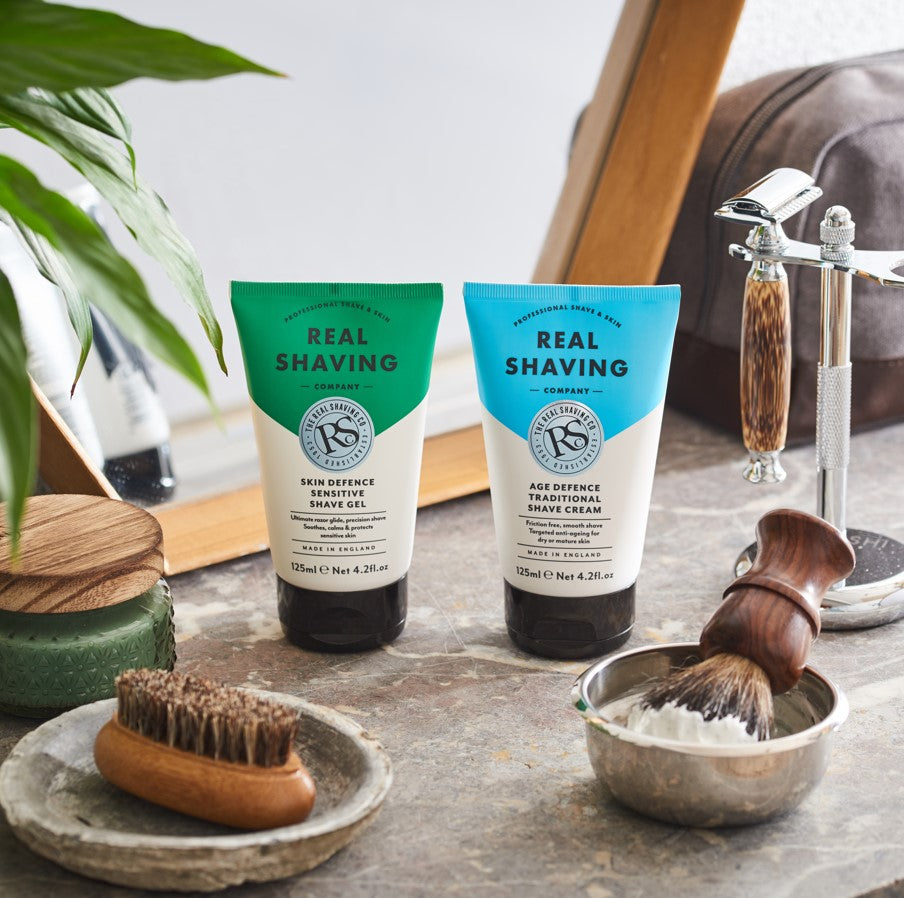In the world of grooming, myths and misconceptions are rife, leaving many men and women puzzled about the best way to achieving a smooth, clean shave. One of the most persistent myths is the belief that shaving makes hair grow back thicker and darker. Sterling Shave Club takes a look at this and other common shaving myths with evidence-based explanations.
Myth #1: Shaving Makes Hair Grow Back Thicker and Darker
Many people have heard this myth and have hesitated to pick up a razor for fear of sprouting a thicker, darker beard. However, this myth is simply not true. The thickness and colour of hair are determined by genetics and hormonal factors, not by the act of shaving. When you shave, you're cutting the hair at its thickest point, giving it a blunt edge as it grows back. This can create the illusion of thicker hair, but in reality, the hair's thickness remains the same.
Scientific Explanation: Dermatologists and hair experts confirm that shaving does not alter the thickness or colour of hair. According to Dr. Terrence Keaney, a dermatologist and member of the American Academy of Dermatology, "Shaving has absolutely no effect on the rate of hair growth or the thickness of the hair shaft." The appearance of thicker hair after shaving is due to the blunt edge created by cutting the hair at the skin's surface, making it feel coarser as it grows back. However, this effect is temporary and does not change the hair's actual thickness.
Myth #2: Shaving Causes Ingrown Hairs
Another common misconception is that shaving leads to the development of ingrown hairs, those pesky bumps that occur when hair curls back into the skin instead of growing outward. While it's true that ingrown hairs can occur after shaving, they are not caused by shaving itself but rather by improper shaving techniques or inadequate skincare.
Scientific Explanation: Ingrown hairs typically occur when hair follicles become clogged with dead skin cells and oil, causing the hair to grow sideways or curl back into the skin. This can happen if you shave against the direction of hair growth, use a dull razor, or fail to exfoliate regularly. By using a sharp razor, shaving with the grain, and exfoliating your skin before shaving, you can minimize the risk of ingrown hairs and achieve a smoother shave.
Myth #3: Shaving Creams and Gels Are Just Marketing Gimmicks
Some men believe that shaving creams and gels are unnecessary and that a bar of soap or water alone is sufficient for a good shave. However, using a high-quality shaving cream or gel can significantly enhance the shaving experience and improve the condition of your skin.
Scientific Explanation: Shaving creams and gels serve multiple purposes beyond simple lubrication. They help to hydrate and soften the hair, making it easier to cut, while also providing a protective barrier between the razor and the skin, reducing friction and irritation. Additionally, many shaving creams contain moisturizing ingredients that nourish and soothe the skin, leaving it feeling smooth and refreshed after shaving.
It's important to separate fact from fiction when it comes to shaving myths. Contrary to popular belief, shaving does not make hair grow back thicker or darker, nor does it inevitably lead to ingrown hairs. By understanding the science behind shaving and adopting proper shaving techniques, you can achieve a smooth, comfortable shave without falling victim to common misconceptions. At Sterling Shave Club, we're committed to providing our subscribers with the knowledge and shaving products they need to achieve their best shave every single time.

